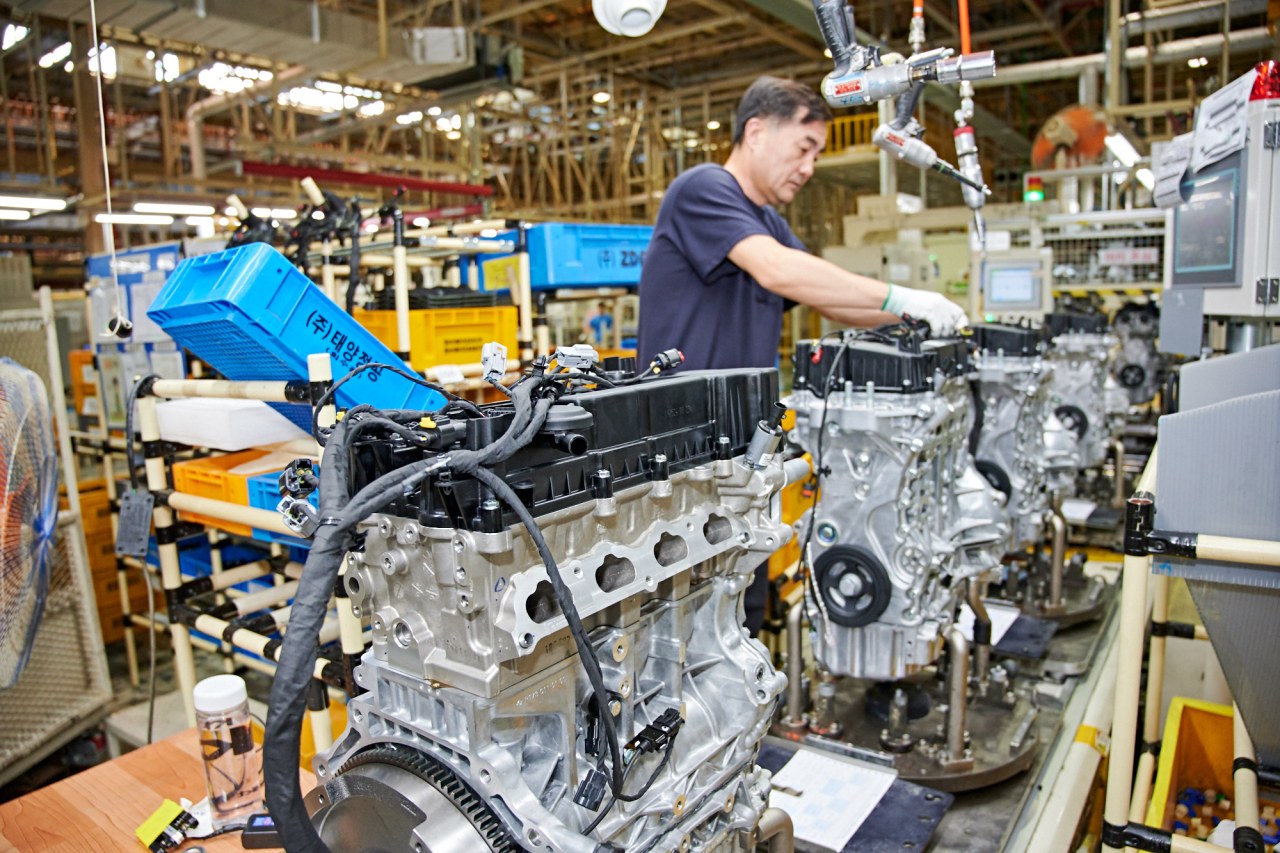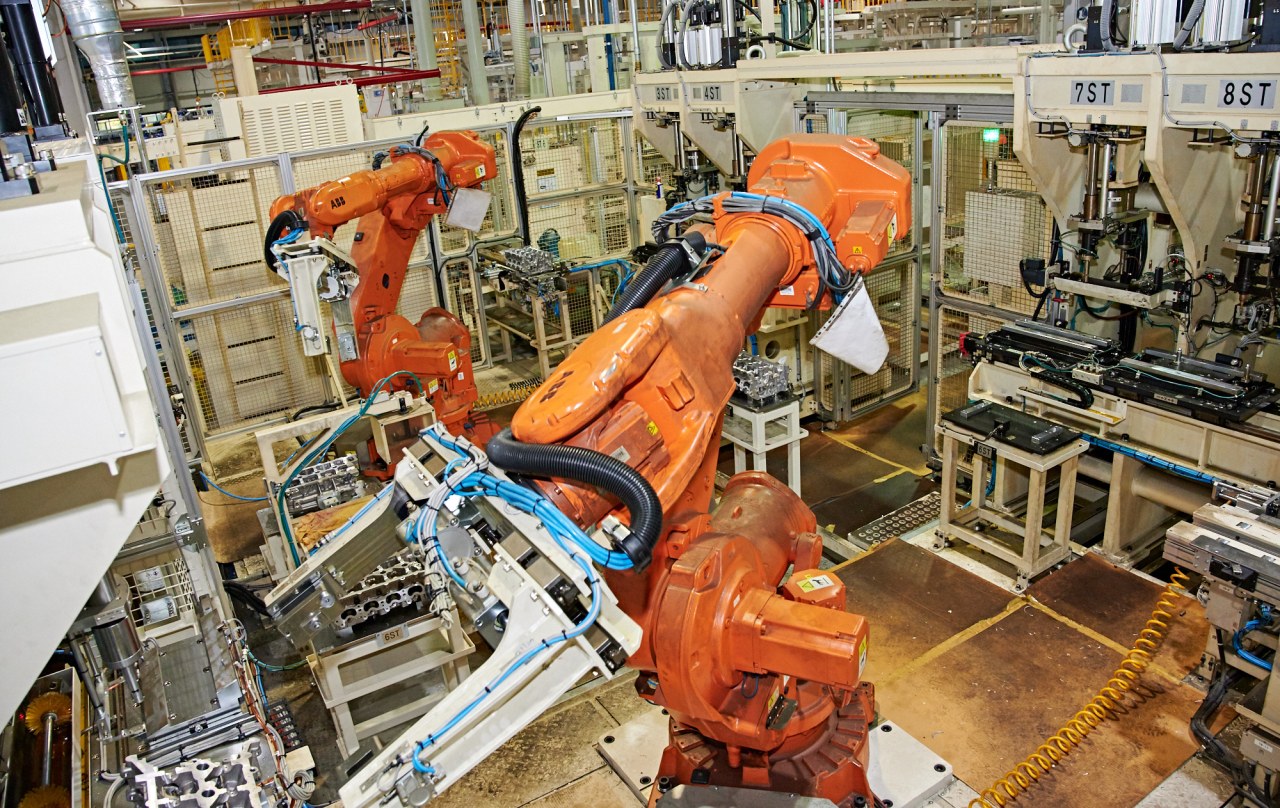CHANGWON, South Gyeongsang Province -- An engine is often dubbed the “heart of a car” as it converts gasoline energy for motion. When it comes to sport utility vehicles, the performance of an engine is even more important because it decides their power.
SsangYong Motor, with 30-year-history, has been churning out gasoline engines at its Changwon plant in South Gyeongsang Province.
The plant, comprised of two units, spans over 111,500 square meters.
The first factory is responsible for 1.5- and 1.6-liter small-sized engines used for its flagship compact SUV Tivoli. The second is in charge of producing midsized 2-liter engines used for Rexton and Korando spinoffs.
When stepping inside the facilities, only a few workers are stationed alongside the conveyor belts, as the manufacturing process is fully robotized.
“Engine manufacturing can be divided into two parts. First, a process which requires sharpening of the metal to form the frame of the engine and the axis of the rotation. The other is assembling part which involves attaching some 1,100 auto parts and components to the engine. The manufacturing part is robotized,” said Byun Jin-su, a team leader at the Changwon plant.
He added that 300-400 engines are manufactured a day and it takes five-six hours to complete manufacturing and assembling both gasoline or diesel engines. Six 15-ton trailer trucks deliver the new engines to its Pyeongtaek finished car plant every day, he said.
 |
An employee attaches auto parts to the vehicle engine at SsangYong Motor’s Changwon plant in South Gyeongsang Province on Sept. 18. (SsangYong Motor) |
According to the carmaker, its confidence in manufacturing the “masterpiece” engines goes back to 1991, when it partnered with Mercedes-Benz to share the technology to increase the efficiency of four- and five-cylinder diesel engines.
SsangYong created its first engine in 2004 using its own technology and produced over 1 million engines that year. The number of engines produced annually hit the 3 million mark last year.
The determination was evident inside the factory, where slogans such as “No receiving, making, sending faulty products,” “We only make masterpiece,” and “Make the Benz-quality product,” were noticeable.
“All our robots and facilities are made in Germany. We use processing technology and manufacturing systems which we gained through our partnership with Mercedes-Benz for engine development. That’s why we are confident about our engine’s durability,” said a SsangYong official.
 |
A robot manufacturing a vehicle engine at SsangYong Motor’s Changwon plant in South Gyeongsang Province on Sept. 18. (SsangYong Motor) |
With the increased market size and consumer demand for SUVs, SsangYong said its production capacity of gasoline engines has also grown.
The market data shows that sales of gasoline SUVs reached 135,530 units last year, more than a sixfold jump in four years. From January to July this year, gasoline SUVs took 37.9 percent of vehicles sales in Korea.
Amid the changing automotive trend, SsangYong’s Changwon plant is preparing to focus on gasoline engine development and manufacturing as well.
Following its production of gasoline engine G20TR GDi used for its export model G4 Rexton in 2017, the automaker has been producing gasoline engine G15TF GDi for Tivoli and Korando since May. Of its seven kinds of engine lineups, four are gasoline engines while the rest are for diesel models.
Recently, SsangYong also developed a 1.5 liter turbo GDI engine for gasoline models of Tivoli and Korando, which produces a maximum torque of 280 kilogram-meters with 170 horsepower. It is a capacity well-above its rivals that use GDI 1.5 engine such as Ford’s Escape and Hyundai’s Tucson.
The latest engine also has 1,500 to 4,000 rpm, a relatively wider range of the rotation per minute of a crankshaft that increases fuel-efficiency.
“Our latest engine illustrates SsangYong’s devotion to create high-efficiency downsizing gasoline engines to respond to strengthened regulation over exhaust and fuel efficiency globally,” said Min Byung-doo, a director in charge of SsangYong’s Changwon plant.
Min said it took 37 months to produce the automaker’s own turbo GDI engine by benchmarking rival models like Hyundai Tucson, BMW Mini Country and Peugeot 308.
“The ‘small engine’ technology that SsangYong owns will become our strength in the automotive market where the trend is shifting toward eco-friendly products,” he added.
By Kim Da-sol (
ddd@heraldcorp.com)









